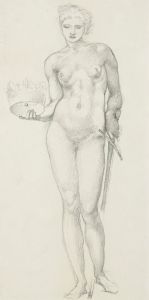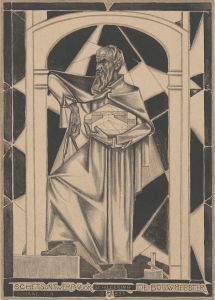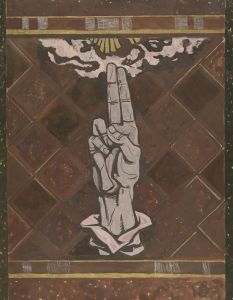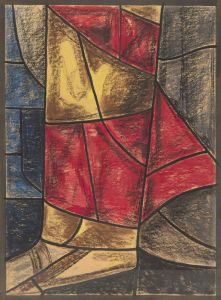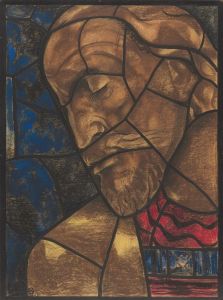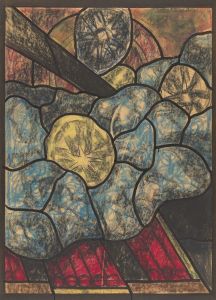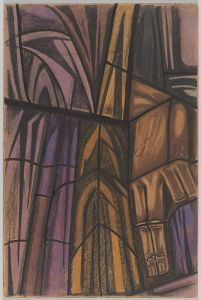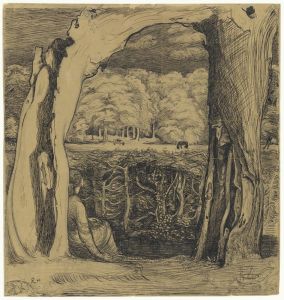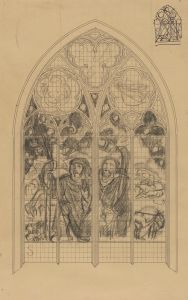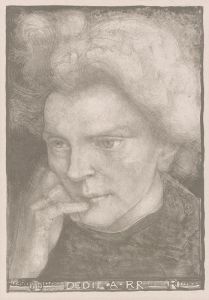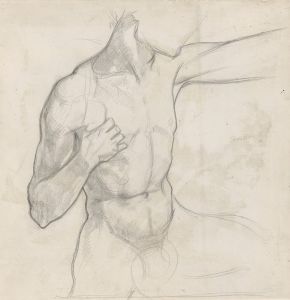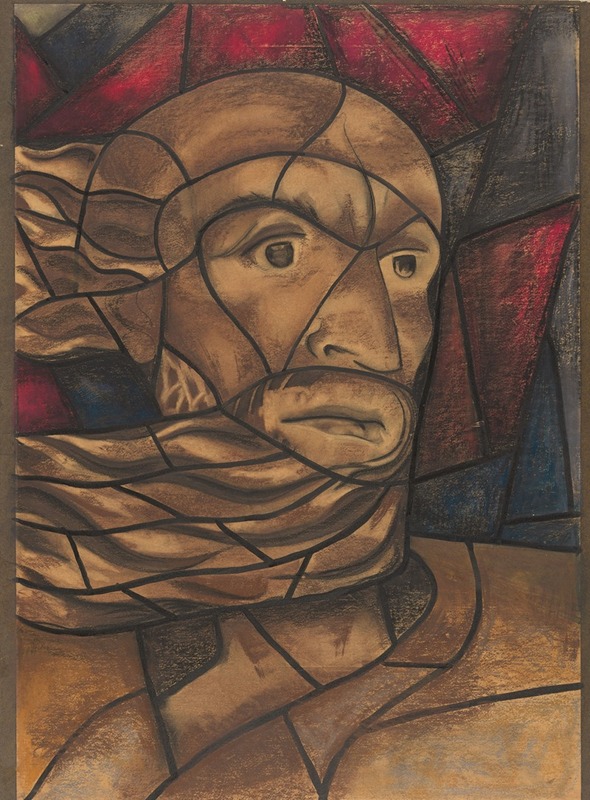
Ontwerp voor raam in het Noordertransept in de Dom te Utrecht 47
A hand-painted replica of Richard Nicolaüs Roland Holst’s masterpiece Ontwerp voor raam in het Noordertransept in de Dom te Utrecht 47, meticulously crafted by professional artists to capture the true essence of the original. Each piece is created with museum-quality canvas and rare mineral pigments, carefully painted by experienced artists with delicate brushstrokes and rich, layered colors to perfectly recreate the texture of the original artwork. Unlike machine-printed reproductions, this hand-painted version brings the painting to life, infused with the artist’s emotions and skill in every stroke. Whether for personal collection or home decoration, it instantly elevates the artistic atmosphere of any space.
Richard Nicolaüs Roland Holst was a prominent Dutch artist known for his contributions to the fields of painting, design, and illustration. Born on December 4, 1868, in Amsterdam, he became an influential figure in the Dutch art scene during the late 19th and early 20th centuries. Holst's work is often associated with the Art Nouveau movement, and he was known for his intricate designs and symbolic use of color and form.
One of his notable works is "Ontwerp voor raam in het Noordertransept in de Dom te Utrecht 47," which translates to "Design for a Window in the North Transept in the Cathedral of Utrecht 47." This piece is part of a series of designs created by Holst for stained glass windows in the Dom Church, also known as the Cathedral of Saint Martin, in Utrecht, Netherlands. The Dom Church is a historic Gothic-style cathedral that has been a significant religious and cultural landmark in Utrecht since its construction began in the 13th century.
Holst's involvement with the Dom Church project was part of a broader movement in the Netherlands to restore and enhance historic church interiors with new artworks that respected the original Gothic architecture while introducing contemporary artistic elements. His designs for the stained glass windows were intended to complement the existing medieval architecture and add a modern artistic touch that reflected the spiritual and cultural aspirations of the time.
The stained glass window designs by Holst are characterized by their vibrant colors, intricate patterns, and symbolic imagery. They often depict biblical scenes, saints, and allegorical figures, rendered in a style that combines traditional Gothic elements with the flowing lines and organic forms typical of Art Nouveau. Holst's work on the Dom Church windows is considered a significant contribution to the revival of stained glass art in the Netherlands during the early 20th century.
Holst's artistic philosophy was deeply influenced by his belief in the social role of art. He was a member of several artist collectives and was actively involved in promoting the idea that art should be accessible to all and serve a greater social purpose. This belief is reflected in his work for public spaces, such as the Dom Church, where his designs were intended to inspire and uplift the community.
Throughout his career, Holst held various teaching positions, including a professorship at the Rijksakademie van Beeldende Kunsten in Amsterdam, where he influenced a new generation of artists. His contributions to the arts were recognized with several awards and honors, and his work continues to be studied and appreciated for its artistic and historical significance.
Richard Nicolaüs Roland Holst passed away on December 31, 1938, but his legacy lives on through his artworks and his impact on Dutch art and design. The stained glass windows he designed for the Dom Church in Utrecht remain a testament to his skill and vision, blending historical reverence with modern creativity.





